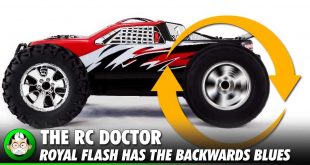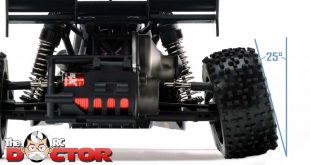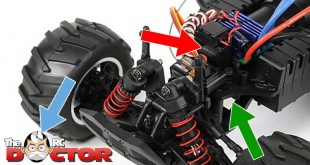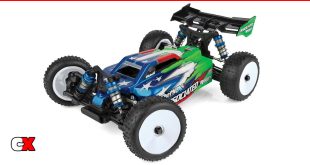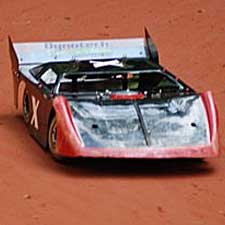
Question:
Doc,
I have only been into racing RC Dirt Oval for 3 yrs. I started out with an OFNA Dirt Oval car but was tired of wearing out parts and tearing up diffs. I purchased a Serpent 811 GT and have ran it one full season. I am very happy with the quality of the car. What I am looking for is your input on a base setup for runing a Dirt Oval with a late-model body. I understand all the variables…track suface, tires, track size, etc. Just wanting a Pros opinion on turning left only.
Thanks
Dan
Answer:
Hi Dan.
Unfortunately, Dirt Oval isn’t quite as popular in my neck of the woods as most other forms of RC. I have dabbled in it a bit and had a great time. The speed is awesome and when you get your car dialed in, it’s pretty amazing to watch it drift through the turns without losing any speed!
I’ve only run Dirt Oval a few times, so I can only give you a few tips based on those runs. Let’s start with the steering. Most people will tell you that one way to help control the car from spinning is to reduce the amount of Dual Rate the car has. This function reduces the amount of throw the wheels have, helping to prevent oversteer. I do agree with this, but I think that if your car is properly set up, you won’t need to reduce the DR at all. I would start with it at around 70-80% and slowly work it back up once you get used to the way the car handles. Having full steering will allow you to ‘work the wheel’ in and out of the corners to keep up the car’s maximum speed.
Next is the suspension. Shocks and diff oils are dependent on your track conditions; thicker oil for smoother tracks, thinner oil for bumpier. Shock springs will be dependent on track conditions, too, but a tip I learned is that you should always try and have a stiffer spring on the right rear of the car (passenger side rear). This stiffer spring does two things; 1) it helps prevent the car from leaning, allowing a much better drive off the corners. It also puts a bit of ‘wedge’ in the car, or the action that causes the car to automatically turn in one direction when you take your hand off the steering wheel. Having the stiffer spring on the right rear will automatically cause the car to turn left slightly (stiffer spring, more ‘wedge’), and this will mean less steering input from you to get into the corners. It may cause the car to drift to the left slightly on the straights, so there is a fine line that you’ll have to find that you’re comfortable with.
Other than that, the rest is basic setups. You can try different front tires (from left to right) to get the car to steer through the corners easier, too. The biggest thing is to get around the track as fast as possible without losing speed in the corners.
Hope this helped a little. Most of it is trial-and-error, which I’m sure you’ve already figured out!
The Doc
 CompetitionX CompetitionX is the most up-to-date source for RC Car News, Reviews and Videos for Radio Control. We also have the most comprehensive Manual Database on the web.
CompetitionX CompetitionX is the most up-to-date source for RC Car News, Reviews and Videos for Radio Control. We also have the most comprehensive Manual Database on the web. 
